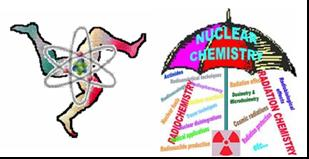Speaker
Dr
Roberta Guilizzoni
(Università degli Studi di Milano)
Description
The continuous development of new approaches and skills in modern radiotherapy, aimed to achieve highly conformal dose volumes, have made heavy demands on dosimetry methodology development. The three-dimensional treatment planning computerized systems, adopted in the clinical praxis for radiation therapy, require dosimetry methods capable of reliable 3D dose measurements in order to ensure that the calculated values agree with the delivered dose distributions, also in complex treatments.
The good tissue equivalence of Fricke-Gel Layer Dosimeters, which consist in a diluted water solution, and the independence of their response on photon energy in the range of interest for radiotherapy, constitute valuable characteristics for appropriate in-phantom dosimetry. Moreover, their layer geometry has allowed the development of a calibration procedure that enable achieving a precision within 3% in absolute dose measurements.
The calibration is performed irradiating the dosimeter at a uniform and precisely known dose, in order to get a calibration matrix that must be used, with pixel-to-pixel manipulation, to obtain the dose image.
A study of the trend in time of dosimeter response after successive exposures was carried out to draw up two protocols allowing to perform calibration and measurement or on the same day or on two subsequent days. As a final protocol, if calibration and measurement are carried out on the same day, it has been established to perform an irradiation of all dosimeters at 4 Gy, a second irradiation at 5 Gy for calibration purpose and the measurement with the calibrated dosimeters. On the opposite, if the measurement is performed the day after calibration, it has been established to perform only one irradiation of all dosimeters at 5 Gy and the measurement the day after.
The comparison of the in-phantom experimental results with the values calculated by the treatment planning system has showed the validity of the proposed protocol.
Author
Dr
Roberta Guilizzoni
(Università degli Studi di Milano)
Co-authors
Dr
Bukra RRUSHI
(Università degli Studi di Milano, Italy)
Prof.
Grazia GAMBARINI
(Università degli Studi di Milano and INFN, Milan, Italy)
Prof.
Luciana PIROLA
(Università degli Studi di Milano, Italy)
Dr
Marta BORRONI
(The Fondazione IRCCS "Istituto Nazionale Tumori", Milan, Italy)
Dr
Mauro CARRARA
(The Fondazione IRCCS "Istituto Nazionale Tumori", Milan, Italy)
Dr
Stefano TOMATIS
(The Fondazione IRCCS "Istituto Nazionale Tumori", Milan, Italy)
